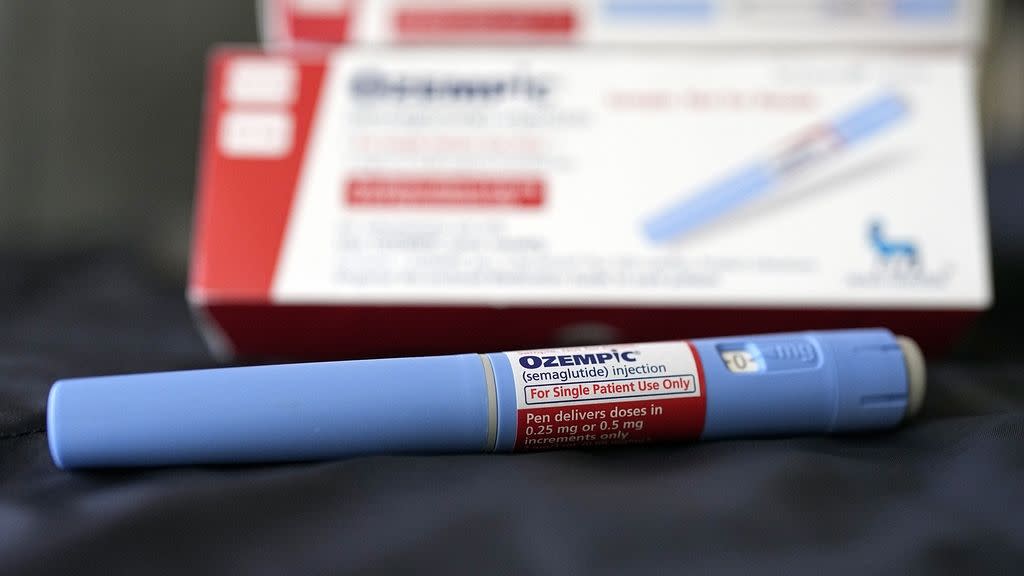Ozempic, Wegovy tied to rare condition that causes one-eye blindness, study says

People on the blockbuster weight-loss and diabetes drugs Wegovy and Ozempic may be at higher risk of one-eye blindness from a rare eye condition, new research finds.
The study, published in the journal JAMA Ophthalmology, included the medical records of about 17,000 people over six years.
It found that patients with diabetes who were prescribed semaglutide, which is marketed as Wegovy and Ozempic, were about four times more likely to be diagnosed with non-arteritic anterior ischemic optic neuropathy (NAION), an eye condition that is painless but cannot be treated or cured.
Meanwhile, overweight or obese patients who were prescribed the drug were more than seven times as likely to have NAION than patients who were not on it.
NAION occurs as the result of reduced blood flow to the optic nerve, which connects the eye to the brain, causing sudden, permanent blindness in one eye. It’s very uncommon, affecting two to ten in 100,000 people.
Even so, researchers said the findings should give doctors and patients pause.
"The use of these drugs has exploded throughout industrialised countries and they have provided very significant benefits in many ways, but future discussions between a patient and their physician should include NAION as a potential risk," Dr Joseph Rizzo, one of the study’s authors and director of the neuro-ophthalmology service at Massachusetts Eye and Ear, where the research took place, said in a statement.
Study authors launched their investigation in summer 2023, after Rizzo and his colleagues diagnosed three patients taking the weight-loss drugs with NAION in one week.
Finding that suspicious given how rare the condition is, they decided to look retroactively at patient data, allowing them to identify the connection.
More research necessary
The study has some important limitations. It looked at correlation, meaning researchers don’t know if the drug caused the blinding condition, and it included an unusually large sample of patients with rare eye diseases, potentially skewing the results.
However, their analysis shows that patients had the greatest risk of NAION in the first year after they were prescribed semaglutide, which suggests the condition could be drug-induced.
Researchers said their results are “significant but tentative,” and that they make the case for more scrutiny on the link between semaglutide and vision loss.
"Because diabetes is a known risk factor for NAION, patients with diabetes who qualify for GLP-1 treatment may be at higher risk for (the condition) to begin with," according to Dr Andrew Lee, clinical spokesperson for the American Academy of Ophthalmology and a neuro-ophthalmologist at Houston Methodist Hospital in the US.
“The type of study conducted here is helpful in identifying potential links between GLP-1 treatment and NAION, but it’s not the type of study that can show the treatment caused NAION,” Lee said.
While the study is interesting, "more research is necessary to test the hypothesis," he added.
Other research shows that anti-obesity drugs can reduce the risk of cancers, heart attack, and stroke, but they have also been linked to rare but severe stomach problems.
The new findings are particularly relevant for people considering the drugs who have “other known optic nerve problems like glaucoma or if there is preexisting significant visual loss from other causes,” Rizzo said.
Semaglutide, which belongs to a class of medicines known as glucagon-like peptide-1 (GLP-1) receptor agonists, has surged in popularity since the Danish drugmaker Novo Nordisk launched Ozempic to treat diabetes in 2017 and put out Wegovy as a weight management drug in 2021.
Demand has grown so much that the European Union is now facing an Ozempic shortage, prompting the European Medicines Agency (EMA) to urge doctors not to prescribe it for “cosmetic purposes” only, and to warn against counterfeit medicines.
This story has been updated to include comments from an independent expert.


